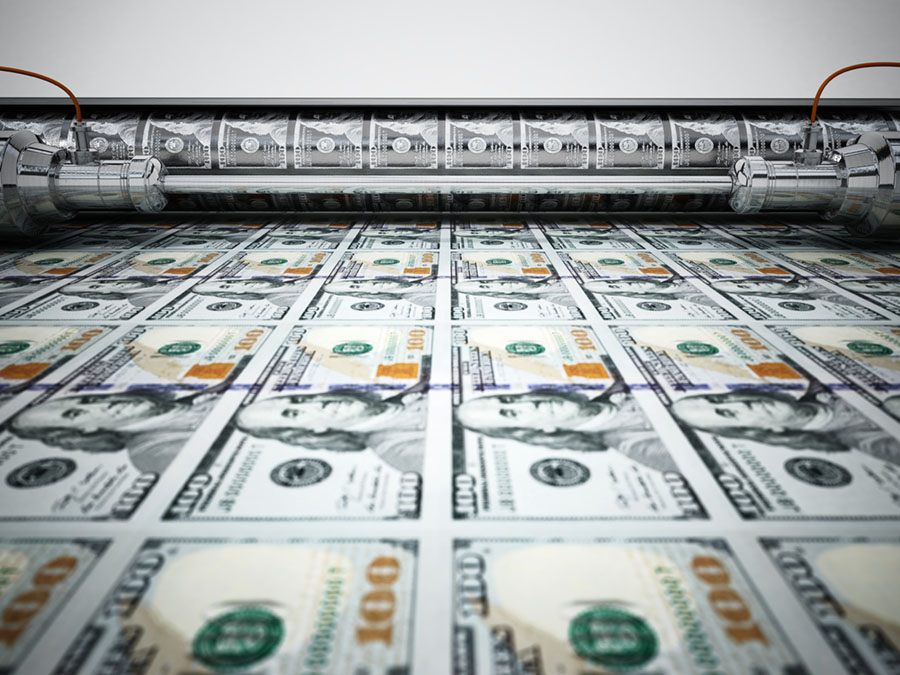
The Central Bank and the Federal Reserve
The US Central Bank and the Federal Reserve Are One in the Same Thing. On Behalf of the Corrupt Banking Elite, They Shape the US Economy and Our Lives.
The primary functions of the central bank and the Federal Reserve are to stabilize currency and provide liquidity in the market. The Federal Reserve System is the all-powerful central banking system for the United States and, they influence global economies.
The United States has had several central banking systems, including the First and Second Bank of the United States, and then the Federal Reserve System after 1913.
Between 1837 and 1913 there was no official central bank, but various private banking institutions did indeed take on central banking functions in the absence of a true central bank.
A central bank such as the Federal Reserve can loan the government money by purchasing government securities which can later be sold back for a profit through interest.
Central banks can also adjust interest rates in order to stabilize currency and either give incentives for loans or decrease those incentives.
Initially, the Federal Reserve was intended to be a reserve of last resort to prevent financial collapse during recessions, but over the years it has gained several powers and become a market regulating force.
Over the years, even prior to its very existence, there has been vast amounts of harsh criticism directed at the Federal Reserve that calls into question its validity and seeks to abolish it.
Is the Federal Reserve Central Banking System Public or Private?
The Federal Reserve is a privately owned bank that profits off of loaning money to the government by purchasing securities and then selling them back at a later date gaining interest on the investment.
The United States government does not have very much oversight over the Federal Reserve Bank and it has little influence over its policies or actions.
Being private corporations, privately owned banks are structured very similar to profit-driven corporate systems.
A board of directors is appointed within the system and they have nearly limitless power within the structure of the Federal Reserve to shape and mold policy and they can take action as they see fit in relation to the economy.
What is Fiat Money Backed by?
The central bank of the United States today, the Federal Reserve, prints America’s currency, but it is backed by nothing aside of confidence.
The worth of fiat money is proportional to the amount of money in circulation versus the amount of goods for sale within the economy.
As more money enters the system, if the number of goods remains constant, inflation occurs and the value of the money drops sharply. If money is removed from the system while the amount of goods remains constant, it creates deflation.
Traditionally money has been backed by commodities such as gold and silver which are somewhat rare resources naturally and have inherent worth.
Money before the central bank and the Federal Reserve was exchangeable for gold or silver if a citizen desired to trade it in for its real worth in backed resources.
This meant money was actually worth something since one could trade it in for resources. When the central bank and the Federal Reserve print money today, it cannot be traded in for gold or silver since it is backed by no resource at all.
This is the very definition of fiat money, and this form of currency is governed by a system of finance termed fractional reserve banking.
Fractional Reserve Banking – The Central Bank and the Federal Reserve
Fractional reserve banking essentially means that banks can loan out many times the amount of money they actually have in reserves, hence the term fractional reserve.
For instance, a bank can loan out nine dollars if it has one dollar in it’s reserve stockpile. This may seem counter intuitive but generally in the absence of mass bank runs, banks will not need to have much cash supply on hand to meet withdrawing demands.
The greatest weakness of fractional reserve banking when applied to the central bank and the federal reserve system, is that if a series of bank runs on deposits do indeed occur, there will not be any money in the banks to withdraw.
This will cause banks to become insolvent, forcing them to close their doors and declare bankruptcy. Many critics suggest this is a fraudulent form of banking as the banks are loaning money they do not have.
Critics also point out this is akin to printing counterfeit money since the cash itself is not backed by any resources and through fractional reserve banking policies they can essentially print money they do not have and loan it out to people requiring interest repayments.
Despite that many people still have great confidence in paper money with no resource backing it, it can be termed as fraudulent counterfeit paper with no inherent value aside of consumer confidence.
These issues are still subject to vast debates across the political spectrum to this very day, and the issues presented are still far from being resolved.

 My First Amazing Ayahuasca Experience
My First Amazing Ayahuasca Experience  Pine Needle Tea
Pine Needle Tea  The REAL Controllers of Humanity: The Papal Bloodlines
The REAL Controllers of Humanity: The Papal Bloodlines  Is it Global Warming or Cooling?
Is it Global Warming or Cooling?  Gun Rights and Obama Examined
Gun Rights and Obama Examined